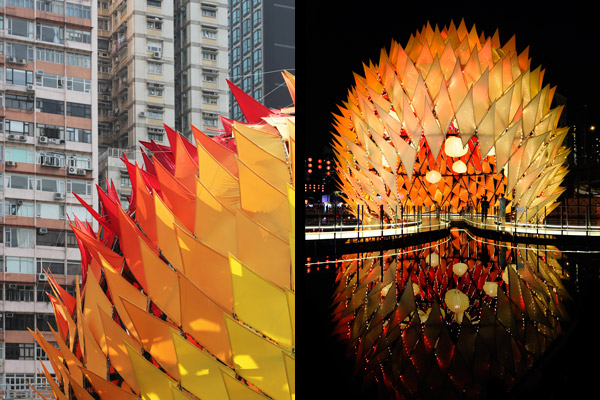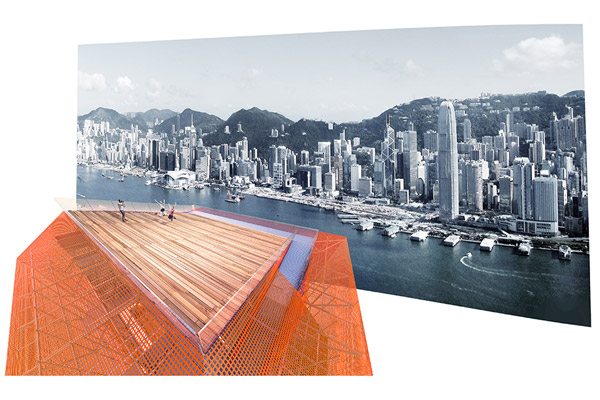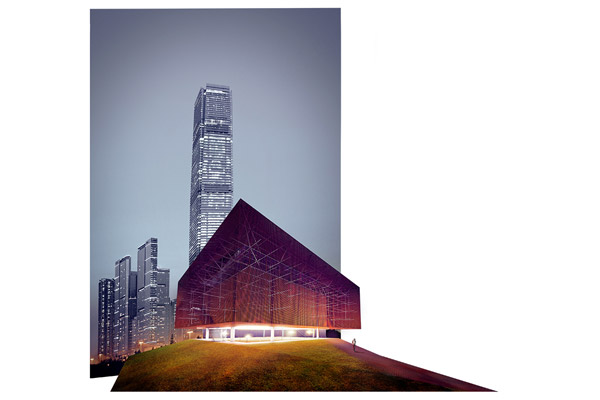Kristof Crolla of experimental architectural firm LEAD talks to Christie Lee about digital fabrication, innovation and the Hong Kong architectural landscape.

March 12th, 2014
Despite having only been established three years ago, LEAD is already making waves in the Hong Kong architectural scene with its highly experimental designs. The practice, with offices in Hong Kong and Antwerp, is headed up by Kristof Crolla and Sebastian De La Grange. The firm’s portfolio ranges from the residential and commercial to the cultural; notable projects include the Golden Moon 2012 Mid-Autumn’s Festival Lantern, which nabbed the 2013 Perspective Award, and the Dragon Skin Pavilion.

Golden Moon 2012 Mid-Autumn’s Festival Lantern
Belgian-born Crolla, who worked for Zaha Hadid before striking out on his own in Hong Kong, is clear-sighted in his ideal vision of an architectural firm. “I want LEAD to operate like a think tank instead of a rigid commercial firm. That’s why we call it LEAD instead of say, combining our names to form something. We want everyone who has worked with us to be recognised,” he states.

Golden Moon 2012 Mid-Autumn’s Festival Lantern
Christie Lee: What are the advantages of digital fabrication?
Kristof Crolla: Back in the day, an architect will draw a plan and sit down with the carpenter and manufacturer and try to build [his project]. These days, the data gets sent to automated machines that would cut the wood, bamboo or whatever material you have in a highly accurate way. Not only does it make extreme accuracy possible, we no longer have to rely on people for certain parts of a project.
CL: How is digital fabrication being incorporated into the projects you’re doing at LEAD?
KC: At LEAD, we try to combine digital fabrication with simple construction means and banal materials to see if we can still get the same kind of freedom while working with contractors of varied skill sets. Those undulating curves wouldn’t have been possible if we didn’t use computer-cut fins for the walls and ceilings.
CL: Your designs are very concerned with light – how it permeates the space both outside and inside the structure. Has that always been something that you’ve been interested in?
KC: Yes, we’re always rethinking the relationship between a structure and its skin.
CL: Was this realised in the Dragon Skin pavilion you built for the 2011-12 Hong Kong & Shenzhen Bi-City Biennale of UrbanismArchitecture?
KC: Yes. We met a wood manufacturer that had invented a new type of wood with plastic inlays in it. If you heat it up, it bends like leather. So we got together a couple of straight planks and cut them up into eight rectangles. What we got were some neat puzzle pieces, which we used to construct the skin of the Pavilion. In this case, the structure of the pavilion is at once the skin and light.

LEAD’s submission for the M+ Arts Pavilion competition, done in collaboration with ESKYIU
CL: What do you feel is lacking in the Hong Kong architectural landscape?
KC: There is a lot of monotony in the city. There doesn’t seem to be a lot of questioning of existing practices and so there isn’t very much innovation. Hopefully, the new generation of architects will be less risk-averse to do more innovation.

LEAD’s submission for the M+ Arts Pavilion competition, done in collaboration with ESKYIU
CL: How does technology affect production cost?
KC: Conceptually speaking, technology such as digital fabrication can drive down the cost, because a lot of the cost in architecture comes from labour and human error. Obviously if you build something that is twisted rather than straight, then it will be more expensive, even with technology.
CL: Would you say that the main innovation in the architectural scene today comes from technology, rather than aesthetics?
KC: It’s a bit of a chicken and egg situation. Without good paint, the painter can’t paint; but without a good eye, the painter wouldn’t be able to make use of the paint. In general, I would say that technology makes certain types of aesthetics more accessible to architects who are starting out in the field. Advanced design tools allows us to cut back on standardised architecture, so we no longer have to confine ourselves to building the same modernist-looking box over and over again.
LEAD
l-e-a-d.pro
A searchable and comprehensive guide for specifying leading products and their suppliers
Keep up to date with the latest and greatest from our industry BFF's!

Suitable for applications ranging from schools and retail outlets to computer rooms and X-ray suites, Palettone comes in two varieties and a choice of more than fifty colours.

Sub-Zero and Wolf’s prestigious Kitchen Design Contest (KDC) has celebrated the very best in kitchen innovation and aesthetics for three decades now. Recognising premier kitchen design professionals from around the globe, the KDC facilitates innovation, style and functionality that pushes boundaries.

In the pursuit of an uplifting synergy between the inner world and the surrounding environment, internationally acclaimed Interior Architect and Designer Lorena Gaxiola transform the vibration of the auspicious number ‘8’ into mesmerising artistry alongside the Feltex design team, brought to you by GH Commercial.

Channelling the enchanting ambience of the Caffè Greco in Rome, Budapest’s historic Gerbeaud, and Grossi Florentino in Melbourne, Ross Didier’s new collection evokes the designer’s affinity for café experience, while delivering refined seating for contemporary hospitality interiors.
The internet never sleeps! Here's the stuff you might have missed

Continuing our new series on the design enthusiasts who work in all sorts of different roles across the industry, we hear from Innerspace’s Creative Collaborator and State Manager NSW.

Wood Marsh’s 40-year legacy shines through landmark infrastructure projects. Recently completing stunning stations at Coburg and Moreland, their designs blend modernity with community needs.